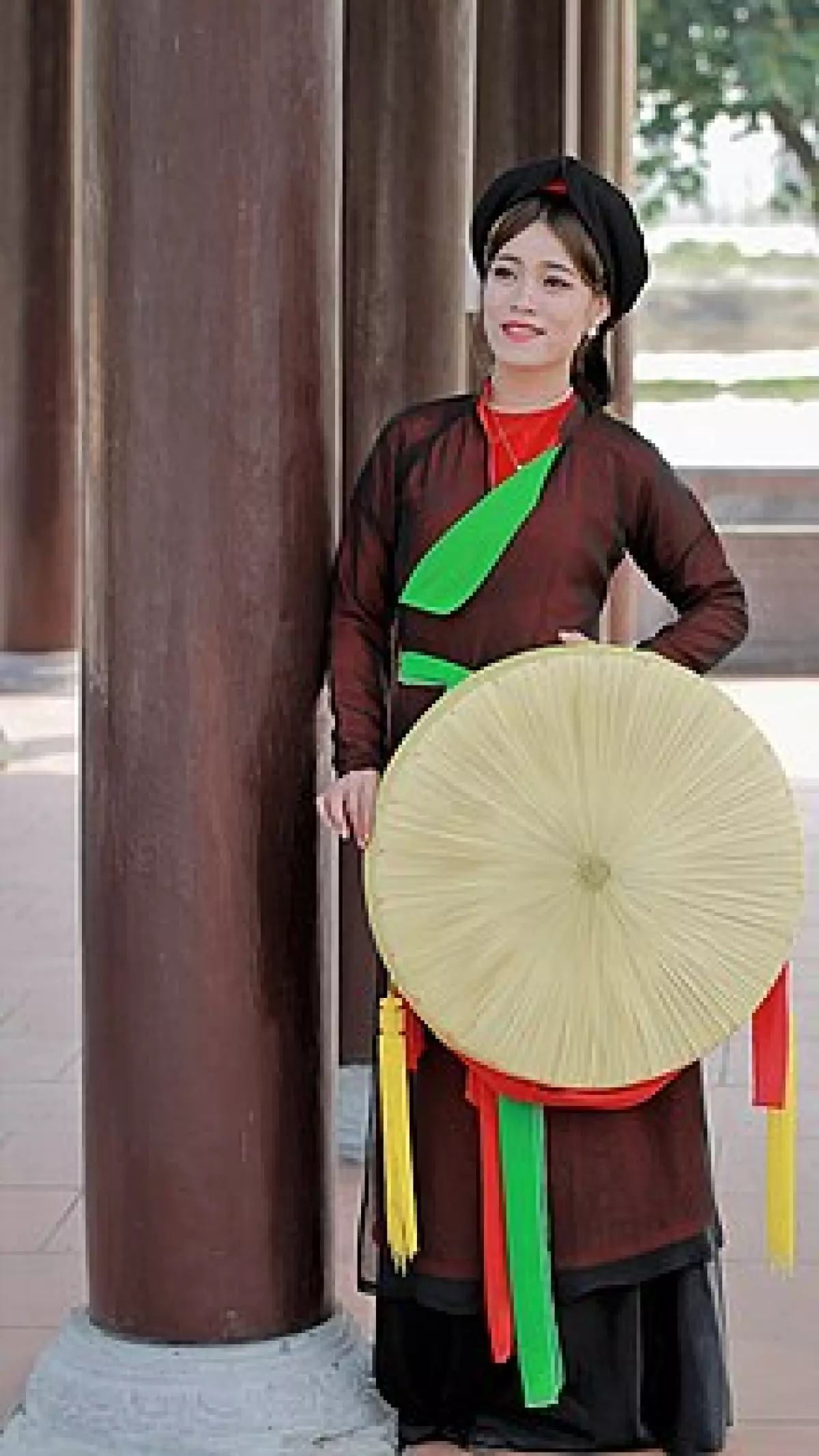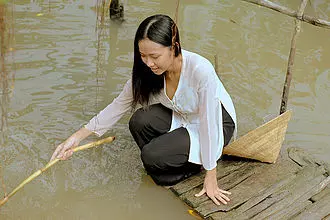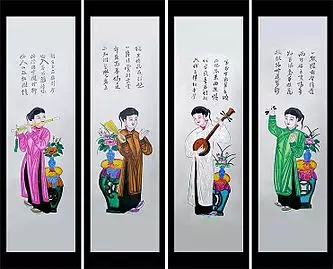
Vietnamese clothing is a unique blend of indigenous and foreign elements, shaped by diverse cultural exchanges throughout Vietnam's history. It represents the rich tapestry of Vietnamese culture and serves as a visual expression of the nation's identity. One of the most iconic Vietnamese garments is the áo dài, often considered the unofficial national dress of Vietnam.
The Evolution of Vietnamese Clothing
The history of Vietnamese clothing reflects the influence of various cultures, such as the Chinese, Indian, and French. The clothing and textile traditions of Vietnam have been shaped by the ancient Bronze Age civilizations, Chinese rule, and the cultural exchanges with neighboring regions.
 Image: Two women wearing áo ngũ thân while holding a ba tầm hat.
Image: Two women wearing áo ngũ thân while holding a ba tầm hat.
During the thousand years of Chinese rule, Vietnamese clothing was influenced by Chinese fashion and customs. The upper classes adopted Chinese clothing styles, while commoners wore simple hemp-based garments. However, the Vietnamese maintained their distinctive customs and style.
The Birth of the Áo Dài
The áo dài, the quintessential Vietnamese garment, originated from its predecessor, the áo ngũ thân, a five-piece outfit worn in the 19th and early 20th centuries. The áo dài evolved when tucks were added to the áo ngũ thân in the 1920s, creating a more fitted and elegant silhouette. Today, both men and women wear the áo dài on formal occasions, complementing its long, split tunic design with trousers.
 Image: A woman in Cần Thơ wearing an áo dài and a nón lá.
Image: A woman in Cần Thơ wearing an áo dài and a nón lá.
Traditional Vietnamese Attire
Apart from the áo dài, Vietnam boasts a range of traditional garments. The áo tứ thân, a dress composed of four separate panels, is particularly popular in the northern region. It serves as a symbol of Vietnamese culture and is associated with grace and femininity.
The khăn vấn, a handwrapped turban, is traditionally worn with various outfits, especially the áo dài. It adds a touch of elegance to the wearer and is a unique custom in the southern region of Vietnam.
Embracing Tradition in the Modern Era
In the 21st century, there has been a revived interest in preserving and promoting Vietnamese traditional clothing. Companies like Ỷ Vân Hiên specialize in reproducing ancient Vietnamese clothing, while artists like Cù Minh Khôi digitize traditional patterns for modern products.
 Image: Nguyễn dynasty officials wearing formal clothing during Lễ tế Nam Giao.
Image: Nguyễn dynasty officials wearing formal clothing during Lễ tế Nam Giao.
Vietnamese traditional attire continues to be celebrated and worn during festivals, ceremonies, and special occasions. It is a testament to the nation's rich cultural heritage and serves as a source of pride for the Vietnamese people.
Preserving Vietnamese Culture
With efforts to revive and preserve Vietnamese traditional clothing, the legacy of Vietnamese attire lives on. Books like "Dệt Nên Triều Đại" and "Ngàn năm áo mũ" provide historical insights into ancient Vietnamese fashion. Festivals and ceremonies, such as the Nam Giao ceremony, showcase traditional clothing, honoring the country's cultural roots.
Vietnamese clothing represents the vibrant tapestry of Vietnam's history and culture. It is a testament to the country's resilience and diversity and serves as a visual reminder of its rich heritage.
Note: This article has been adapted and enriched with additional information from the original content.


















